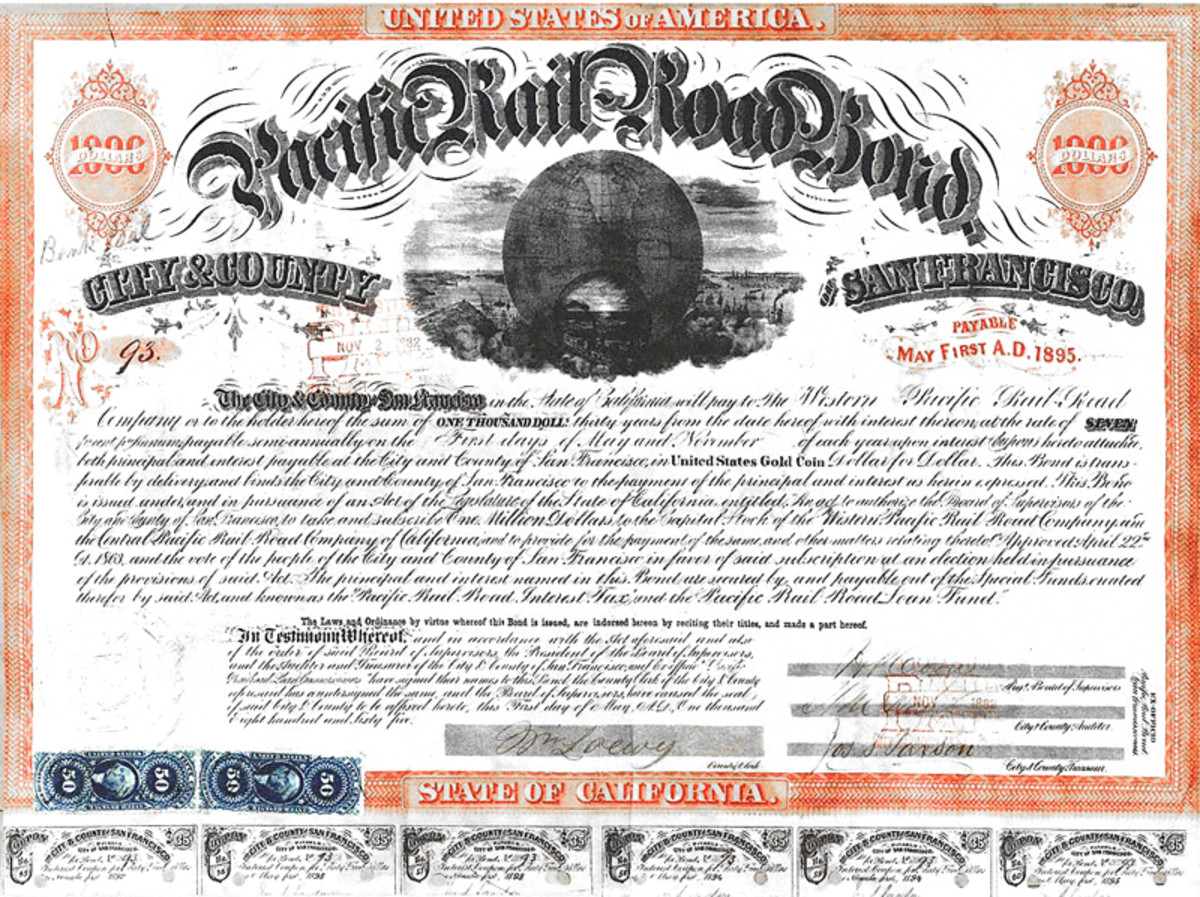INTEREST RATES on Savings BONDS of the US Government

I-BONDS [rate changes every May and November]
Current Rate: under 1% as of May1, 2016
Minimum purchase: $50 for a $50 I-Bond when purchasing
paper bond certificates
$25 for a $25 I- bond when purchased electronically via TreasuryDirect
Maximum purchase : (per calendar year): $5,000 in TreasuryDirect and $5,000 in paper bonds
Denominations: Paper bonds: $50, $75, $100, $200, $500, $1,000, and $5,000
I can't believe this.
Take a shot. Put your money in I-Bonds with US government savings bonds. Check this information below. NOTE: FED dropped Fed Fund rate again WOW...rock bottom ?

INFLATION or DEFLATION
Questions is on PRICE
More I-Bond Video information/explanation

(EYE ) I-Bonds
I Bonds were once sold and redeemed solely as a paper security, but now they're also available in electronic form. As a TreasuryDirect account holder, you can buy, manage, and redeem I Bonds online.
A new program called SmartExchangeSM allows TreasuryDirect account owners to convert their Series EE, and I paper savings bonds to electronic securities in a special Conversion Linked Account within their online account.
Buying I Bonds through TreasuryDirect:
Sold at face value; you pay $50 for a $50 bond.
Purchased in amounts of $25 or more, to the penny.
$5,000 maximum purchase in one calendar year.
Issued electronically to your designated account.
Buying Paper I Bonds:
Sold at face value; i.e., you pay $50 for a $50 bond.
Purchased in denominations of $50, $75, $100, $200, $500, $1,000, and $5,000.
$5,000 maximum purchase in one calendar year.
Issued as paper bond certificates.
If you redeem I Bonds within the first 5 years, you'll forfeit the 3 most recent months' interest; after 5 years, you won't be penalized.
Buy BONDS online thru US Gov't - BUY ONLINE Direct from Federal Government
- Treasury Direct
Buy Bonds ONLINE
I-Bond explained VIDEO
Maturity calculation: COPY/PASTE this link
This site helps you CALCULATE the Maturity Value of your currnet holdings of BONDS
definition of MATURITY VALUE
MATURITY VALUE – The principal amount that will be received at the time a security is redeemed at its maturity. On most securities the maturity value is the par value; on capital appreciation and zero-coupon bonds, however, the maturity value is the compound accreted value at maturity.
MATH formula(s) for various INTEREST periods
...terrific information here for the MATH Major
Interest is the cost of borrowing money. An interest rate is the cost stated as a percent of the amount borrowed per period of time, usually one year. The prevailing market rate is composed of:
The Real Rate of Interest that compensates lenders for postponing their own spending during the term of the loan.
An Inflation Premium to offset the possibility that inflation may erode the value of the money during the term of the loan. A unit of money (dollar, peso, etc) will purchase progressively fewer goods and services during a period of inflation, so the lender must increase the interest rate to compensate for that loss..
Various Risk Premiums to compensate the lender for risky loans such as those that are unsecured, made to borrowers with questionable credit ratings, or illiquid loans that the lender may not be able to readily resell.
The first two components of the interest rate listed above, the real rate of interest and an inflation premium, collectively are referred to as the nominal risk-free rate. In the USA, the nominal risk-free rate can be approximated by the rate of US Treasury bills since they are generally considered to have a very small risk.
Simple Interest
Simple interest is calculated on the original principal only. Accumulated interest from prior periods is not used in calculations for the following periods. Simple interest is normally used for a single period of less than a year, such as 30 or 60 days.
Simple Interest = p * i * n
where:
p = principal (original amount borrowed or loaned)
i = interest rate for one period
n = number of periods
Example: You borrow $10,000 for 3 years at 5% simple annual interest.
interest = p * i * n = 10,000 * .05 * 3 = 1,500
Example 2: You borrow $10,000 for 60 days at 5% simple interest per year (assume a 365 day year).
interest = p * i * n = 10,000 * .05 * (60/365) = 82.1917
Compound Interest
Compound interest is calculated each period on the original principal and all interest accumulated during past periods. Although the interest may be stated as a yearly rate, the compounding periods can be yearly, semiannually, quarterly, or even continuously.
You can think of compound interest as a series of back-to-back simple interest contracts. The interest earned in each period is added to the principal of the previous period to become the principal for the next period. For example, you borrow $10,000 for three years at 5% annual interest compounded annually:
interest year 1 = p * i * n = 10,000 * .05 * 1 = 500
interest year 2 = (p2 = p1 + i1) * i * n = (10,000 + 500) * .05 * 1 = 525
interest year 3 = (p3 = p2 + i2) * i * n = (10,500 + 525) *.05 * 1 = 551.25
Total interest earned over the three years = 500 + 525 + 551.25 = 1,576.25. Compare this to 1,500 earned over the same number of years using simple interest.
The power of compounding can have an astonishing effect on the accumulation of wealth. This table shows the results of making a one-time investment of $10,000 for 30 years using 12% simple interest, and 12% interest compounded yearly and quarterly.
Type of Interest Principal Plus Interest Earned
Simple 46,000.00
Compounded Yearly 299,599.22
Compounded Quarterly 347,109.87
You can solve a variety of compounding problems including leases, loans, mortgages, and annuities by using the present value, future value, present value of an annuity, and future value of an annuity formulas. See the index page to determine which of these is appropriate for your situation.
Rate of Return
When we know the Present Value (amount today), Future Value (amount to which the investment will grow), and Number of Periods, we can calculate the rate of return with this formula:
i = ( FV / PV) (1/n) -1
In the table above we said that the Present Value is $10,000, the Future Value is $299,599.22, and there are 30 periods. Confirm that the annual compound interest rate is 12%.
FV = 299,599.22
PV = 10,000
n = 30
i = (299,599.22 / 10,000) 1/30 - 1 = 29.959922 .0333 - 1 = .12
Effective Rate (Effective Yield)
The effective rate is the actual rate that you earn on an investment or pay on a loan after the effects of compounding frequency are considered. To make a fair comparison between two interest rates when different compounding periods are used, you should first convert both nominal (or stated) rates to their equivalent effective rates so the effects of compounding can be clearly seen.
The effective rate of an investment will always be higher than the nominal or stated interest rate when interest is compounded more than once per year. As the number of compounding periods increases, the difference between the nominal and effective rates will also increase.
To convert a nominal rate to an equivalent effective rate:
Effective Rate = (1 + (i / n))n - 1
Where:
i = Nominal or stated interest rate
n = Number of compounding periods per year
Example: What effective rate will a stated annual rate of 6% yield when compounded semiannually?
Effective Rate = ( 1 + .06 / 2 )2 - 1 = .0609
Interest Rate in Calculations
Time Value of Money calculations always use compound interest.
You must adjust the interest rate and the number of periods to be consistent with compounding periods. For example a 6% interest rate compounded semiannually for five years should be entered 3% (6 / 2) for 10 (5 * 2) periods.
A calculator expects a 6% interest rate to be entered as the whole number 6 whereas formulas typically use a decimal value of .06.
Concepts
Introduction
Interest
Periods
Payments
Present Value
Single
Annuity
Future Value
Single
Annuity
Amortization
Diagrams
--------------------------------------------------------------------------------
Calculator
Copyright ©1998-2002 Cedar Spring Software, Inc. All Rights Reserved
Privacy | Legal & Terms of Use | Trademarks | Feedback | About








